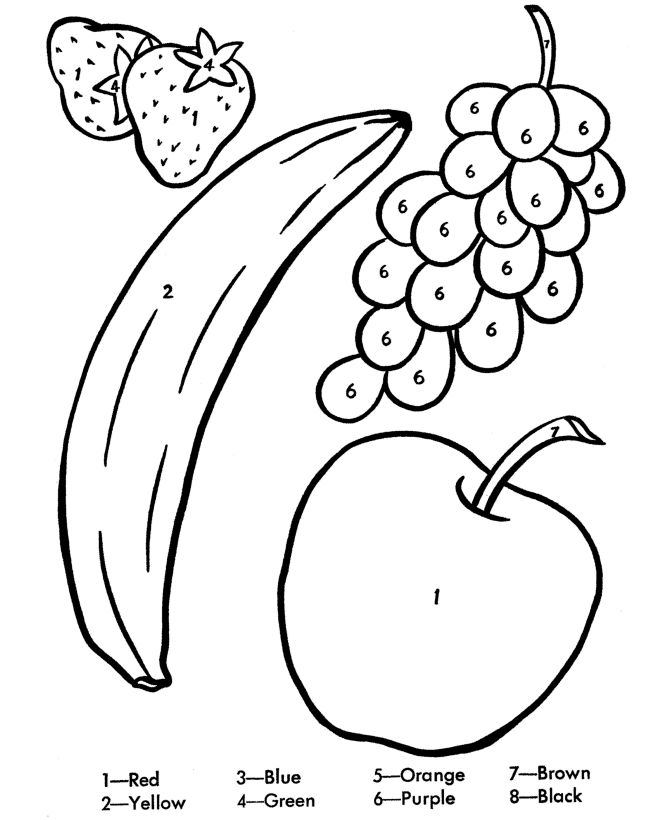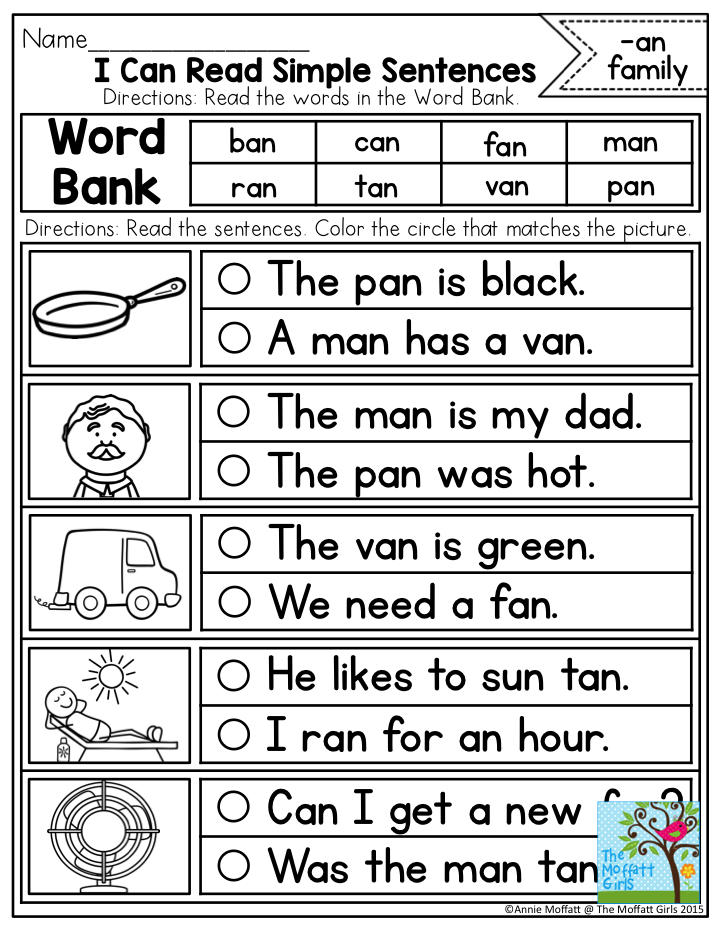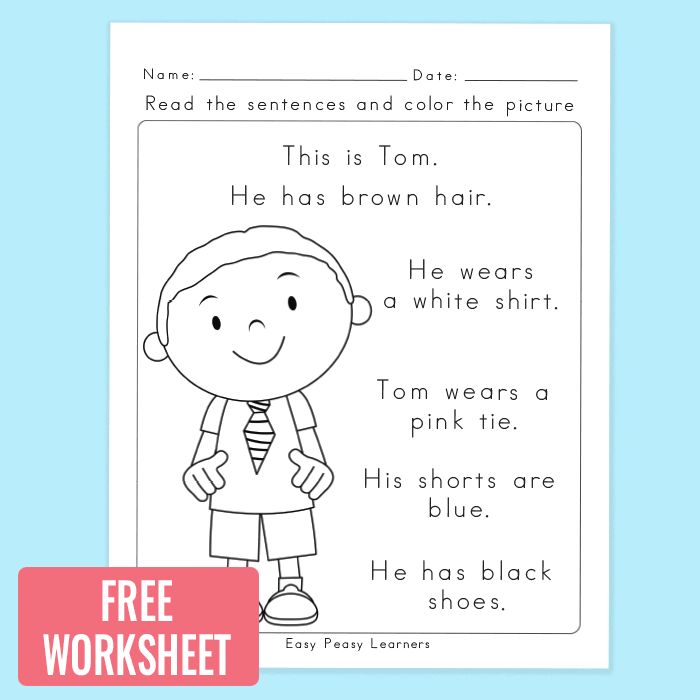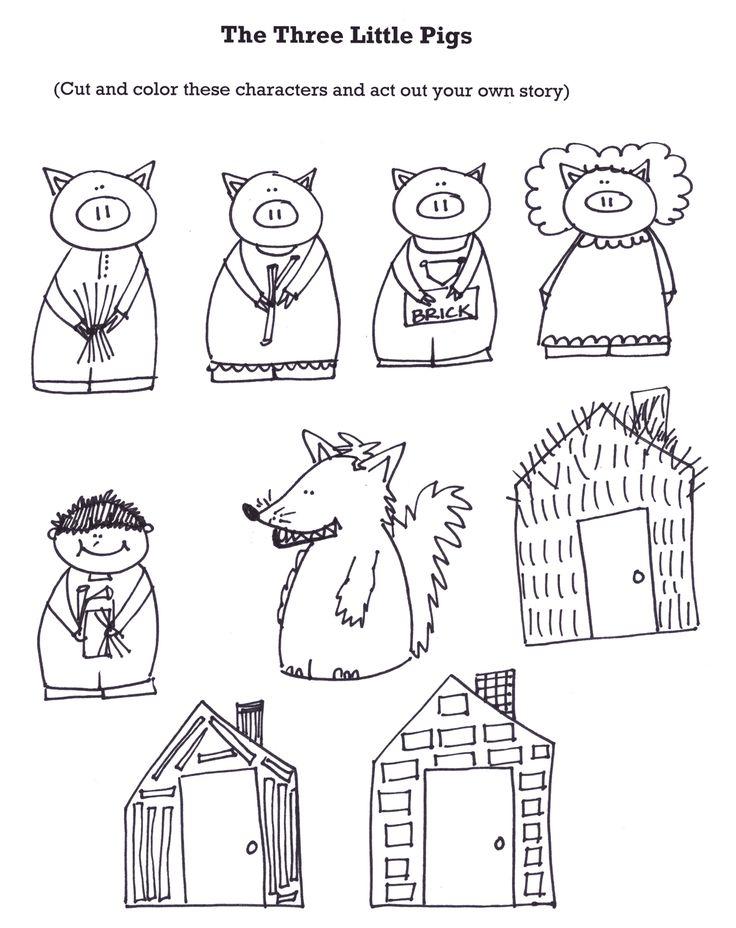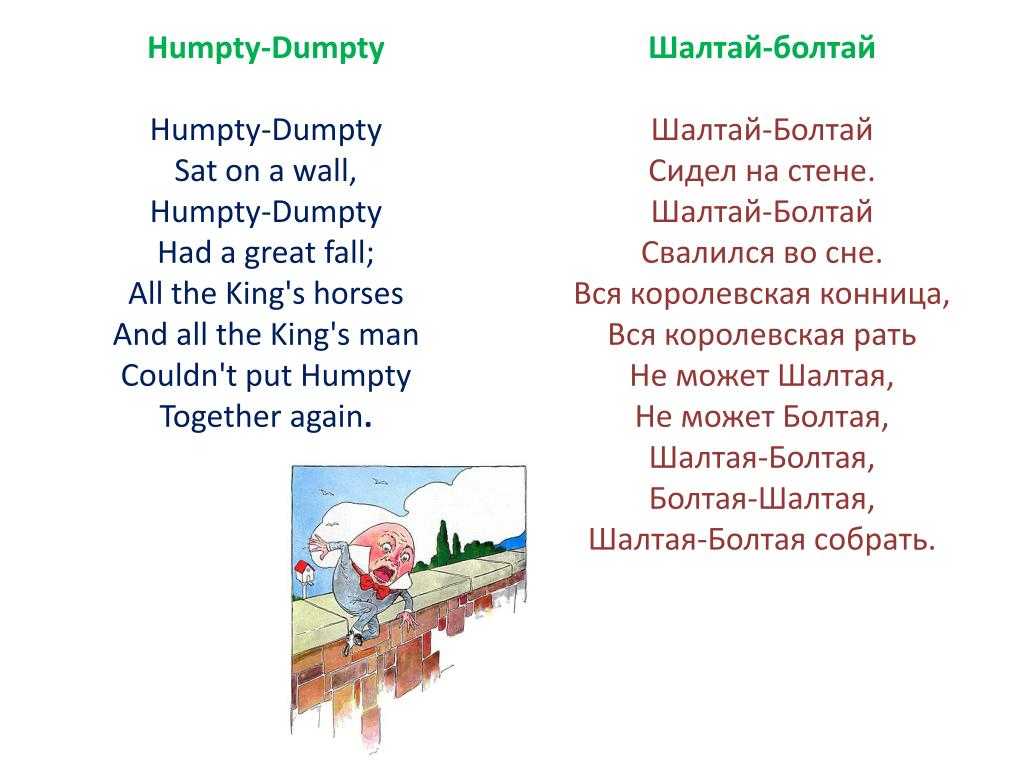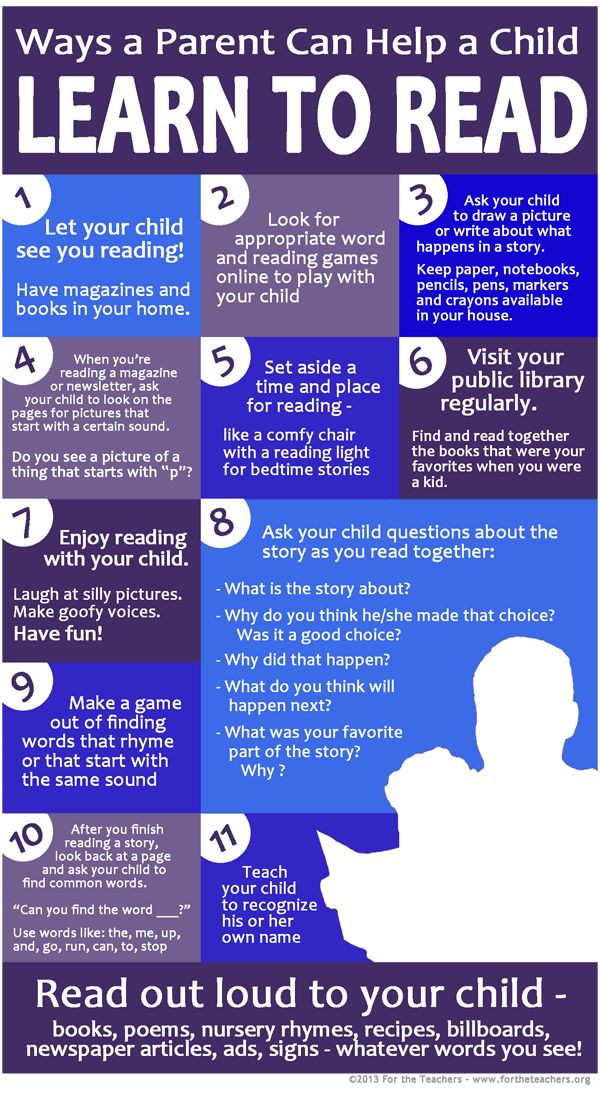How to teach vocabulary words
Five Key Principles for Effective Vocabulary Instruction
By: Timothy Shanahan
Effective vocabulary teaching has five key principles.
1. Focus on rich meanings, not just dictionary definitions.
Too often vocabulary instruction is no more than kids copying definitions from the dictionary. But researchers have identified a number of instructional approaches that outdo any learning that may accrue from copying definitions.
One of those key principles is that students work with more extensive or complex definitions or explanations of word meanings. Encourage the encyclopedia explanation over the dictionary meanings.
When I teach vocabulary, I often have the kids engage in trying to provide several different versions of a word’s definition.
- Dictionary definition
- Synonyms for the word
- Antonyms (if there are any)
- Part of speech
- Classification (what semantic group does it belong to, like tools or ways of talking)
- Comparison (it is like____, but different because______)
- Real-life examples
- Graphic version (drawings, pictures, representations)
- Acting it out
By the time you’ve come up with nine different explanations of a word you are more likely to remember it (and, of course, we can do more than just these nine if we want to get into analogies, part-whole relationships, and the like).
2. Emphasize the connections among words.
Many vocabulary programs introduce words by category, such as focusing on words from health and medicine or about transportation, including some that have research showing that they can be effective. However, direct research specifically on this aspect of teaching, suggest that word learning goes slower and without evident later advantage from the extra work that mastering these words entails needed to master these sets of words.
And, yet, evidence reveals that the lexicons in our heads are organized in various networks, not like dictionaries. When you remember a word, you draw from memory a plethora of related ideas—attributes, functions, and synonyms related to that word.
Start thinking diesel trucks and words like wheel, tire, dump truck, gasoline, and highway will not be far behind.
There are circumstances in which it is necessary to simultaneously introduce collections of closely related words that may require fine or subtle distinctions, such as when kids are learning about the structure of cells or atoms.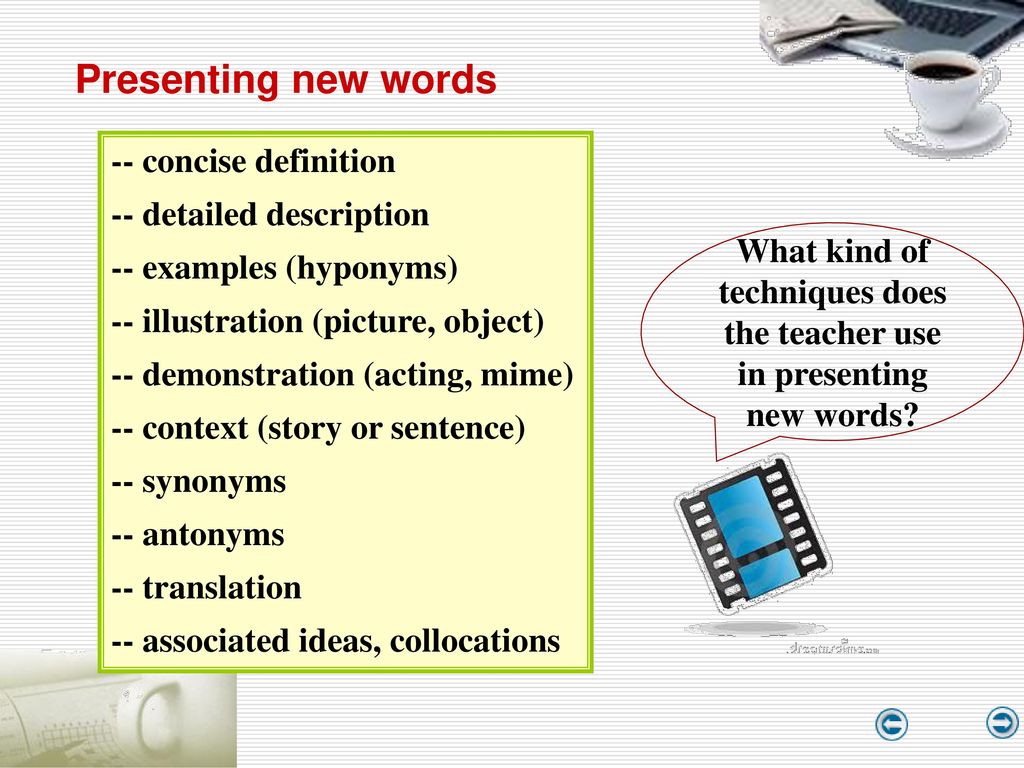 I’ll give that a pass, since such introductions are likely to be accompanied by a much deeper dive into the underlying concepts in such cases.
I’ll give that a pass, since such introductions are likely to be accompanied by a much deeper dive into the underlying concepts in such cases.
I also think it is quite reasonable when teaching words to get kids thinking about words about that concept that they may already have mastered. Linking a new word to a concept, is very different than trying to learn and link a whole collection of words.
I would avoid introducing together plethora, dearth, scarcity, cornucopia, shortage, plenty, sufficient, abundant, and liberal as some programs do. Collect such words over time as they are learned and then later you can have kids comparing the ideas or fitting them into continuum or network.
One teacher I know has her students classifying the vocabulary each week in bulletin board folders, and when a folder accumulates several related words, they revisit them as a set.
3. Promote usage of the words.
It is not enough that kids study word meanings, but they have to learn to use these words in their reading, writing, speaking, and listening.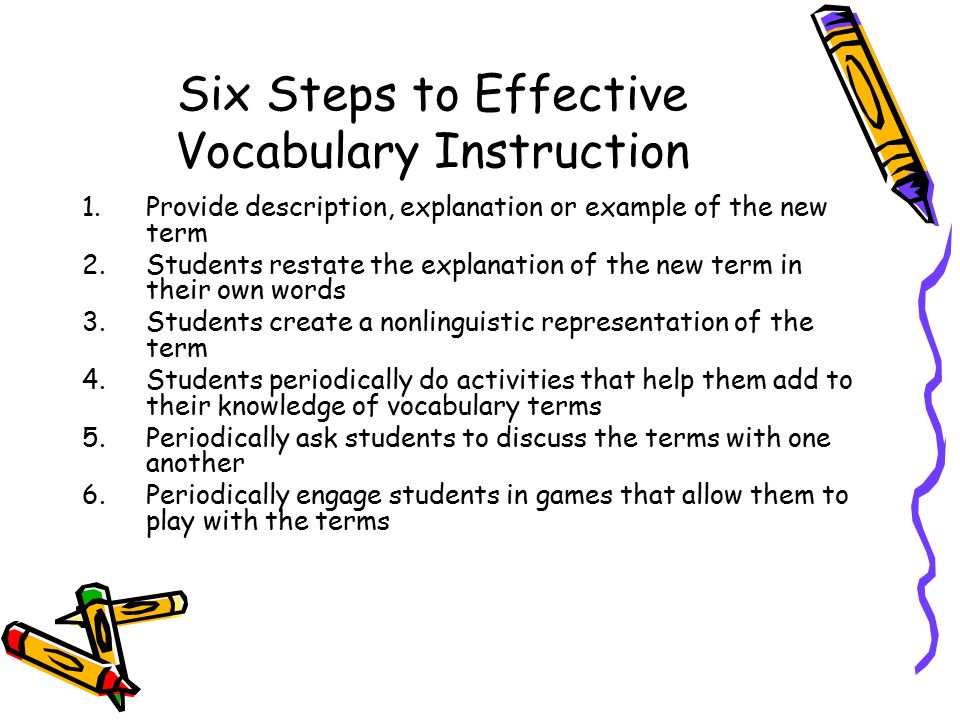 Instruction should create opportunities for kids to use words in all of these ways.
Instruction should create opportunities for kids to use words in all of these ways.
For instance, that rich vocabulary assignment that was described earlier can be done by groups of kids working together to come up with those multiple definitions. That kind of cooperation requires that kids talk with each other about the words. Additionally, I often assign small numbers of words to each group and then have them get together to teach each other the words that their groups studied… more speaking and listening.
One might reward kids for using the studied vocabulary in their writing — or that can be required in various ways.
Isabel Beck and Moddy McKeown came up with the idea of “word wizards,” which gave kids extra points in vocabulary if they could bring in evidence that they had confronted or used the words of interest. Kids get very turned on if they run across some of the vocabulary when watching television or playing their favorite computer game.
4. Review is important.
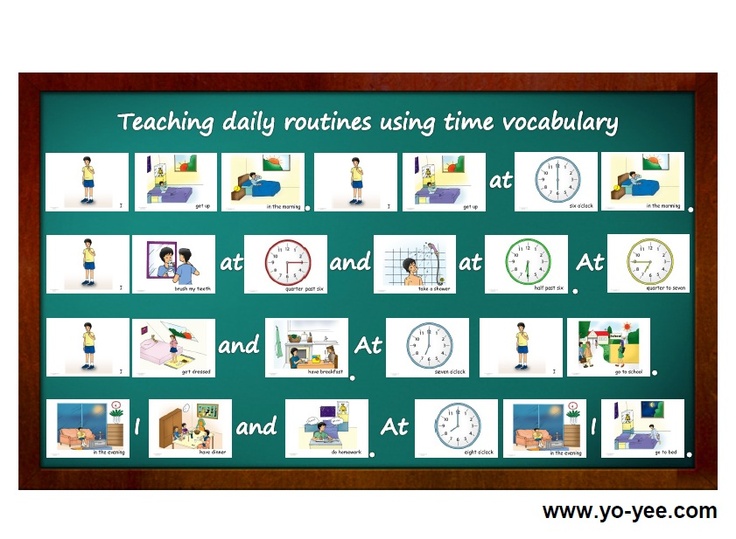
It can be hard to retain vocabulary if you don’t get a lot of opportunity to use it. We may teach vocabulary because certain words were prominent in the texts, we were reading this week, but then kids might not see them for a long time.
There are many ways to deal with vocabulary, such as having one day a week when you only work with words that have been taught (and supposedly learned) in the past — or perhaps entire weeks might be devoted to this throughout the year.
I’m a fan of including words from past weeks on vocabulary quizzes and for the use of vocabulary notebooks to help punch up kids’ writing during revision.
Another way of ensuring the words stick, is to see how many additional words students can construct morphologically, adding prefixes or suffixes or altering parts of speech and so on. I’ve written about some of the important work being done on morphology by Peter and Jeffrey Bowers before (and you can search for that on my site or on Google).
5.
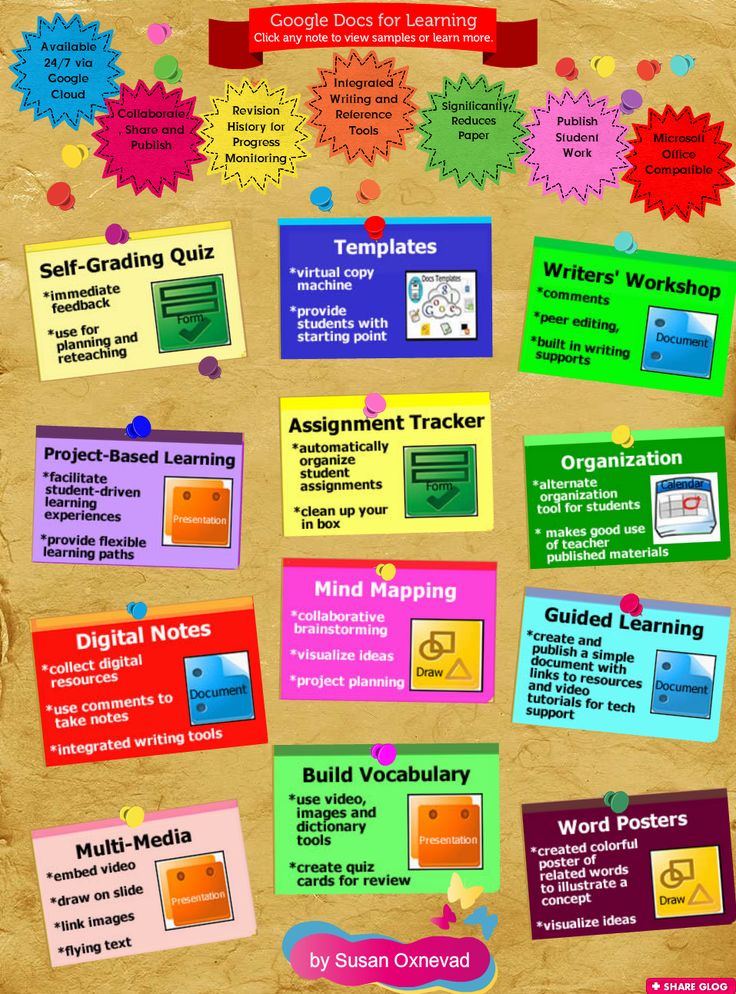 Involve students in identifying some of the words to be studied.
Involve students in identifying some of the words to be studied.I noted earlier that much vocabulary learning is incidental and, therefore, largely out of the province of schools. However, not all kids are equally good at such learning and even for those who it is easier, it can still be a tough slog requiring many experiences with a word to get it to stick.
One thing that we can do to help develop a “word consciousness” among our students is to involve them in identifying unknown words from their own reading — and to include these in your classroom curriculum. When readers get used to noticing their lack of knowledge of particular words, they will be more likely to try to resolve those gaps when reading. Kids will also be more motivated if they have some say so over the curriculum as well.
This article is excerpted from the longer blog post, Five Things Every Teacher Should Know About Vocabulary Instruction.
Literacy Strategy: How to Teach Vocabulary Words
It’s hard for students to read and understand a text if they don’t know what the words mean. A solid vocabulary boosts reading comprehension for students of all ages. The more words students know, the better they understand the text. That’s why effective vocabulary teaching is so important, especially for students who learn and think differently.
A solid vocabulary boosts reading comprehension for students of all ages. The more words students know, the better they understand the text. That’s why effective vocabulary teaching is so important, especially for students who learn and think differently.
In this article, you’ll learn how to explicitly teach vocabulary using easy-to-understand definitions, engaging activities, and repeated exposure. This strategy includes playing vocabulary games, incorporating visual supports like graphic organizers, and giving students the chance to see and use new words in real-world contexts.
The goal of this teaching strategy isn’t just to increase your students’ vocabulary. It’s to make sure the words are meaningful and relevant to their lives.
Watch: See teaching vocabulary words in action
Watch this video of a kindergarten teacher teaching the word startled to her students:
Read: How to use this vocabulary words strategy
Objective: Students will learn the meaning of new high-value words and how to use them.
Grade levels (with standards):
- K–5 (CCSS ELA Literacy Anchor Standard L.4: Determine or clarify the meaning of unknown and multiple-meaning words and phrases)
- K–5 (CCSS ELA Literacy Anchor Standard R.4: Interpret words and phrases as they are used in a text)
Best used for instruction with:
- Whole class
- Small groups
- Individuals
How to prepare:
Choose the words to teach. For weekly vocabulary instruction, work with students to choose three to five new words per week. Select words that students will use or see most often, or words related to other words they know.
Before you dive in, it’s helpful to know that vocabulary words can be grouped into three tiers:
- Tier 1 words: These are the most frequently used words that appear in everyday speech. Students typically learn these words through oral language. Examples include dog, cat, happy, see, run, and go.
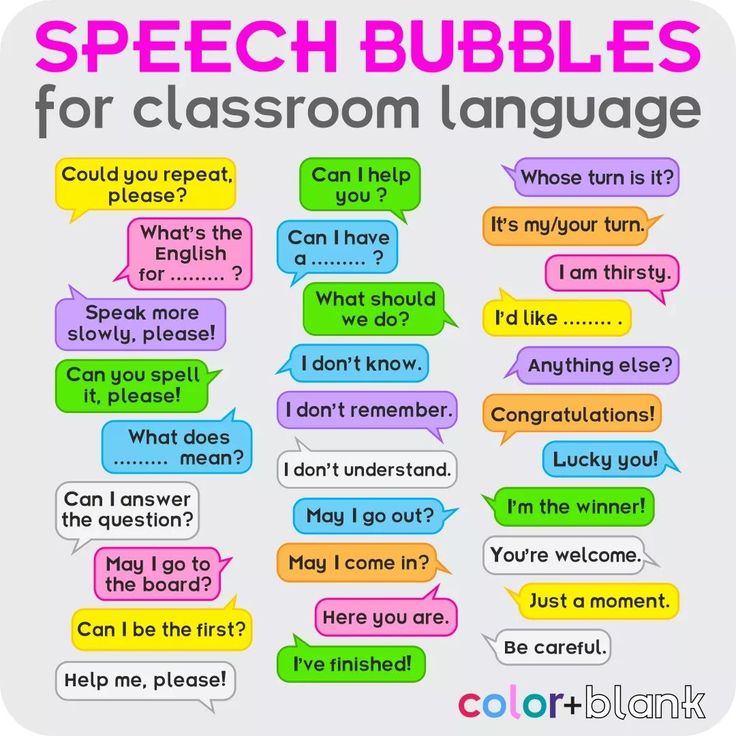
- Tier 2 words: These words are used in many different contexts and subjects. Examples include interpret, assume, necessary, and analyze. The Smarter Balanced Assessment Consortium has a partial list of Tier 2 words, broken down by grade levels.
- Tier 3 words: These are subject-specific words that are used in particular subject areas, such as peninsula in social studies and integer in math.
When choosing which vocabulary words to teach, you may want to pick words from Tier 2 because they’re the most useful across all subject areas.
Select a text. Find an appropriate text (or multiple texts for students to choose from) that includes the vocabulary words you want to teach.
Come up with student-friendly definitions. Find resources you and your students can consult to come up with a definition for each word. The definition should be easy to understand, be written in everyday language, and capture the word’s common use.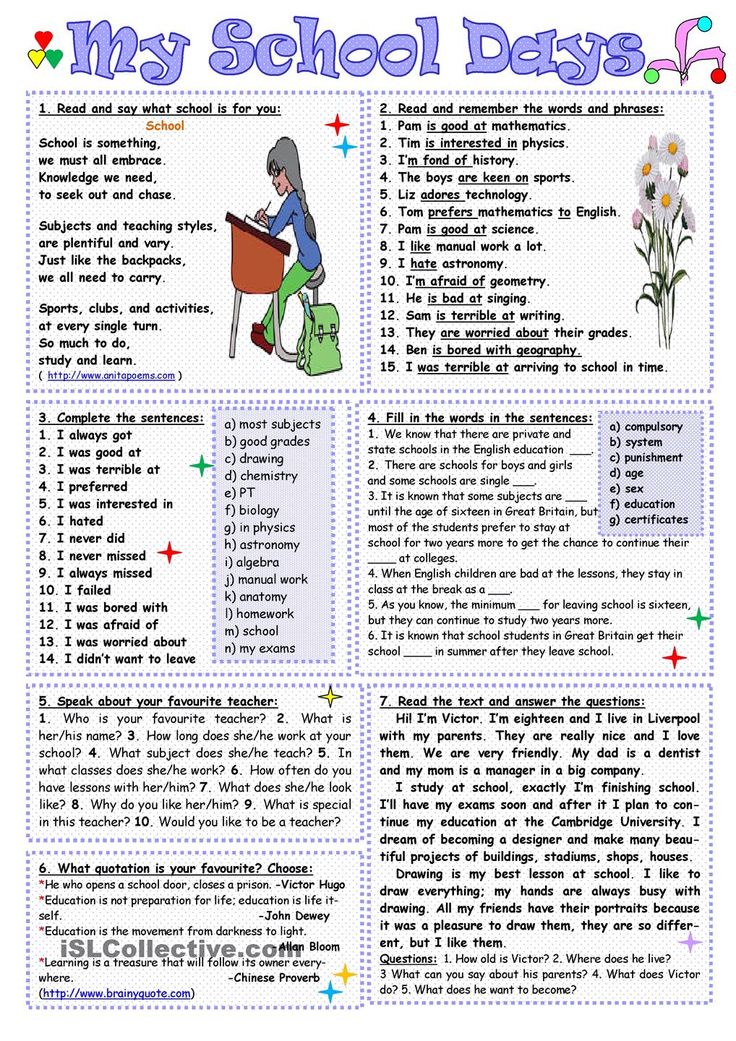 Your definitions can include pictures, videos, or other multimedia options. Cambridge Learner’s Dictionary, Merriam-Webster Learner’s Dictionary, and Wordsmyth Children’s Dictionary are all good resources to help create student-friendly definitions.
Your definitions can include pictures, videos, or other multimedia options. Cambridge Learner’s Dictionary, Merriam-Webster Learner’s Dictionary, and Wordsmyth Children’s Dictionary are all good resources to help create student-friendly definitions.
How to teach:
1. Introduce each new word one at a time. Say the word aloud and have students repeat the word. For visual support, display the words and their definitions for students to see, such as on a word wall, flip chart, or vocabulary graphic organizer. Showing pictures related to the word can be helpful, too.
For English language learners (ELLs): Try to use cognates (words from different languages that have a similar meaning, spelling, and pronunciation) when you introduce new words. For more information about using cognates when teaching vocabulary to ELLs, use these resources from Colorín Colorado. You can also ask students to say or draw their own definition of the words — in English or their home language — to help them understand each word and its meaning.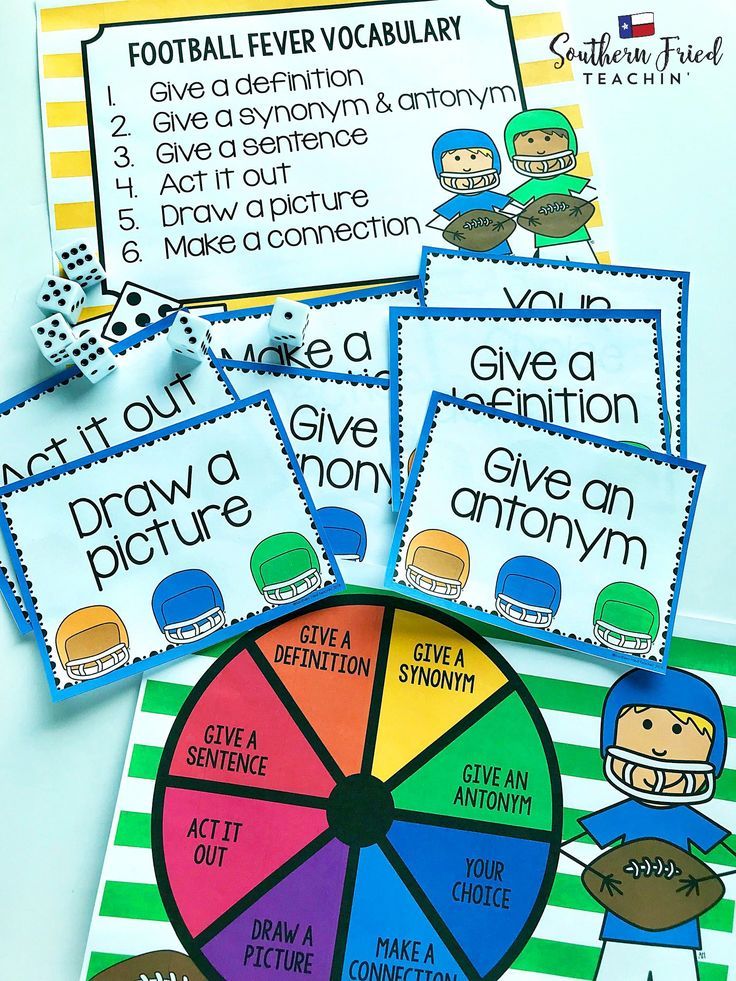
2. Reflect. Allow time for students to reflect on what they know or don’t know about the words. Remember that your class will come to the lesson with varying levels of vocabulary knowledge. Some students may be familiar with some of the words. Other students may not know any of them. If time permits, this could be a good opportunity to use flexible grouping so students can work on different words.
3. Read the text you’ve chosen. You can read it to your students or have students read on their own (either a printed version or by listening to an audio version). As you read, pause to point to the vocabulary words in context. Use explicit instruction to teach the word parts, such as prefixes and suffixes, to help define the word. If students are reading on their own or with a partner, encourage them to “hunt” for the words before reading. Hunting for these words first can reduce distractions later when the focus is on reading the text.
4.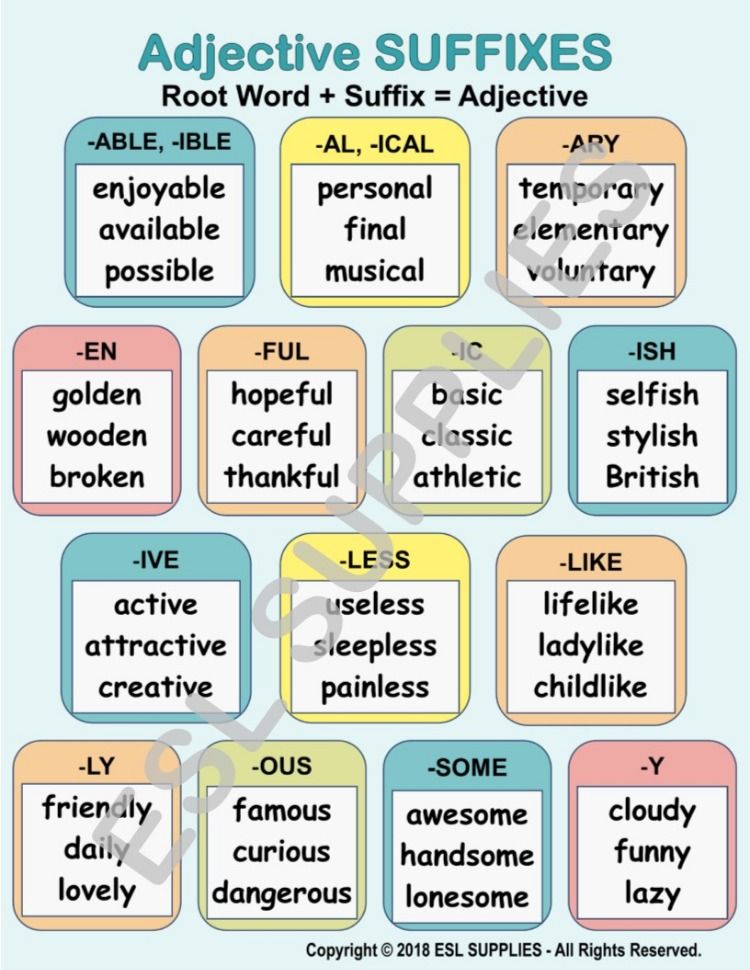 Ask students to repeat the word after you’ve read it in the text. Then remind students of the word’s definition. If a word has more than one meaning, focus on the definition that applies to the text.
Ask students to repeat the word after you’ve read it in the text. Then remind students of the word’s definition. If a word has more than one meaning, focus on the definition that applies to the text.
5. Use a quick, fun activity to reinforce each new word’s meaning. After reading, use one or more of the following to help students learn the words more effectively:
- Word associations: Ask students, “What does the word delicate make you think of? What other words go with delicate?” Students can turn and talk with a partner to come up with a response. Then invite pairs to share their responses with the rest of the class.
- Use your senses: Ask your students to use their senses to describe when they saw, heard, felt, tasted, or smelled something that was delicate. Allow students time to think. Then ask them to give a thumbs up if they’ve ever seen something delicate. Call on students to share their responses. Do the same with each of the senses.
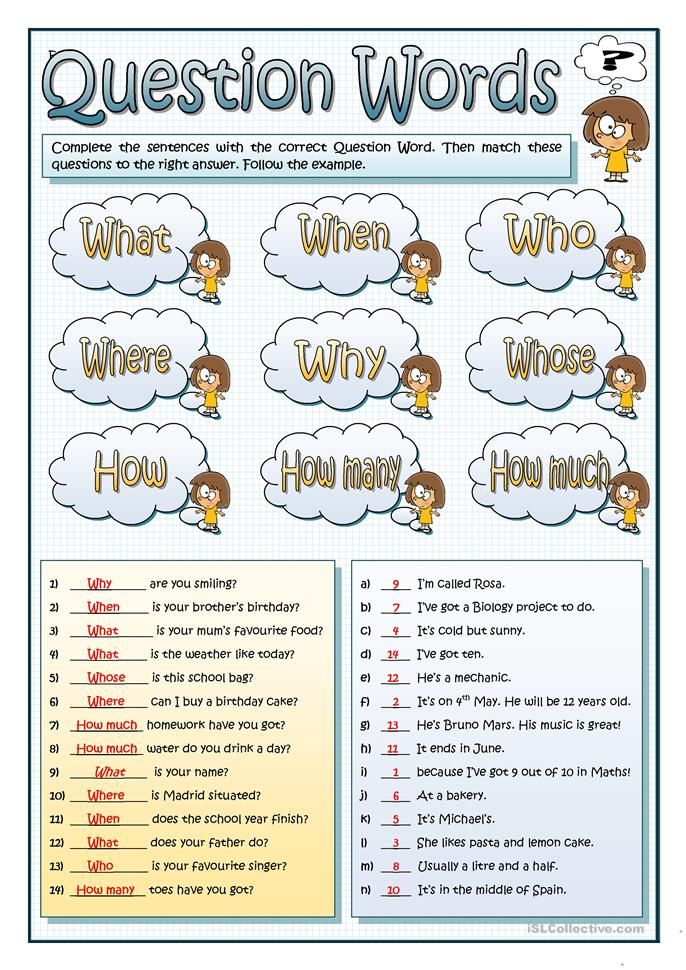
- A round of applause: If the word is an adjective, invite students to clap based on how much they would like a delicate toy, for example. Or students can “vote with their feet” by moving to one corner of the room if they want a delicate toy or another corner if they don't. This activity works especially well if you pair the new adjective with a familiar noun.
- Picture perfect: Invite students to draw a picture that represents the word’s meaning.
- Examples and non-examples: Give one example and one non-example of how the word is and isn’t used. For instance, you could tell students that one thing that is delicate is a teacup. One thing that isn’t delicate is the cement stairs into the school. Then invite students to share their own examples of things that are and aren’t delicate.
After students do one or more of the activities above, have them say or draw the word again.
6. Play word games.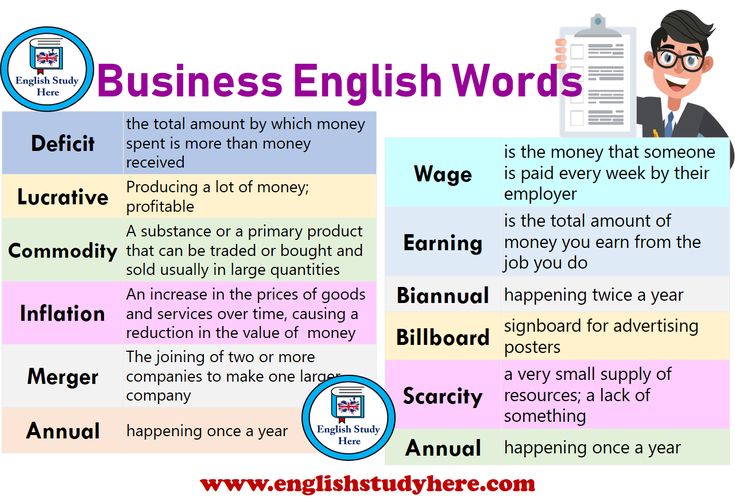 Throughout the week, play word games like vocabulary bingo, vocabulary Pictionary, and charades to practice the new words. Include words you’ve taught in the past for additional reinforcement.
Throughout the week, play word games like vocabulary bingo, vocabulary Pictionary, and charades to practice the new words. Include words you’ve taught in the past for additional reinforcement.
7. Challenge students to use new words. They can use their new vocabulary in different contexts, like at home, at recess, or during afterschool activities. Consider asking students to use a vocabulary notebook to jot down when they use the words. You can even get your colleagues or school administrators in on the fun by asking them to use the words when talking with students or in announcements. Praise students when you hear them using those words in and out of the classroom.
Understand: Why this strategy works
Rote memorization (“skill and drill”) isn't very helpful when it comes to learning new vocabulary. Students learn best from explicit instruction that uses easy-to-understand definitions, engaging activities, and repeated exposure. Teaching this way will help students understand how words are used in real-life contexts and that words can have different meanings depending on how they’re used.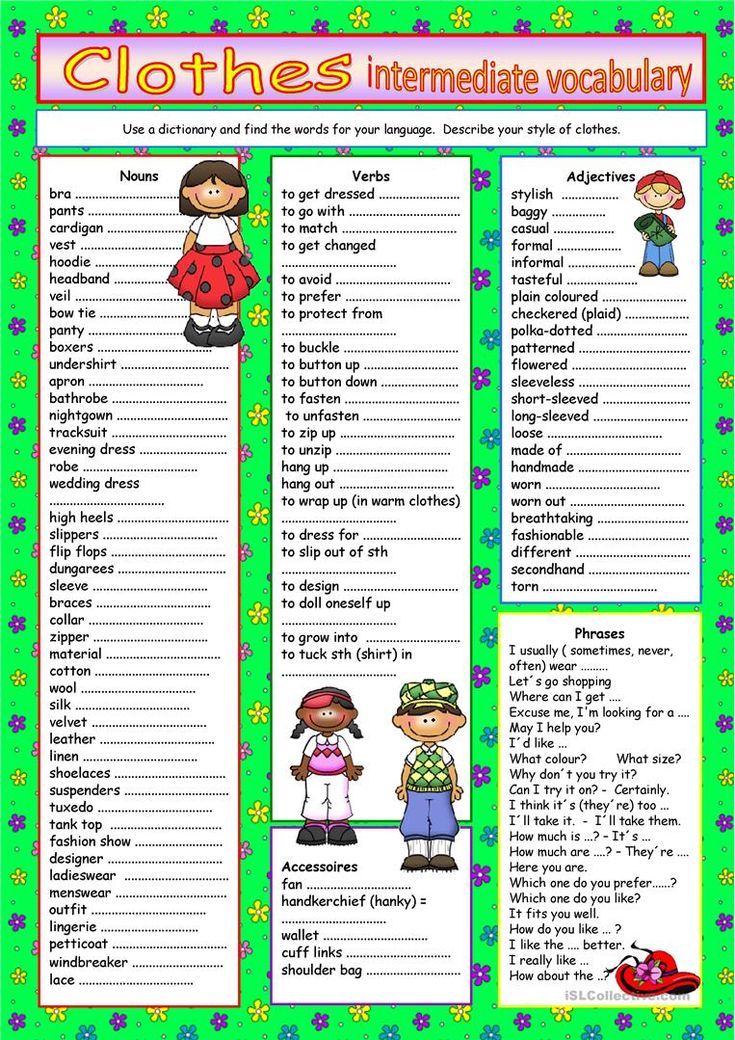
This explicit approach helps all students and is especially helpful for students who learn and think differently. This includes students who have a hard time figuring out the meaning of new words when they’re reading. It can be difficult for them to make an inference or use context clues to figure out what a word means.
Explicit vocabulary instruction with student-friendly definitions means there’s no guesswork involved. Repeated exposure and practice help to reinforce the words in students’ memories.
Share with families this resource they can use at home to help students grow their vocabulary. You can model some of these strategies for families at back-to-school night or another family event.
Adapt: Use for distance learning
- Partner with your students’ families. Find out what resources they have available and what they might need to support learning at home.
- Guide students in a synchronous online lesson or record a video for asynchronous learning.
 Either way, use UDL as you’re planning the lesson.
Either way, use UDL as you’re planning the lesson. - Give students multiple ways to access the text during the lesson. Display the text on the screen and read it aloud or play an audio version. Provide links to the text or audio versions (if available).
- If you’re asking students to draw definitions, they can use paper and pencil and erase their work to use the paper over and over. Or they can put paper inside a Ziploc bag and use a marker that can be wiped off (if they have these supplies).
- Give students opportunities to collaborate. For synchronous learning, use small group instruction or break-out rooms. For asynchronous learning, have students collaborate on an interactive whiteboard or shared document.
- Use a tool like Padlet to make an online word wall for the class with definitions and pictures for each word. Or have students create a personal vocabulary tracker digitally or on paper.
Research behind this strategy
“Bringing Words to Life: Robust Vocabulary Instruction (2nd ed. ),” by Isabel L. Beck, Margaret G. McKeown, and Linda Kucan
),” by Isabel L. Beck, Margaret G. McKeown, and Linda Kucan
“A review of the current research on vocabulary instruction,” from the National Reading Technical Assistance Center, RMC Research Corporation
“Building Academic Vocabulary: Teacher’s Manual,” by Robert J. Marzano and Debra J. Pickering
“Teaching Word Meanings,” by Steven A. Stahl and William E. Nagy
Related topics
Reading and writing
School supports
Strategies and tips
How to learn English words: the best tricks ‹ Ingleks
Want to learn how to learn English words quickly and easily? We will tell you how many words you need to know, where to get them from, what tools to use and how to learn all this in general. Use at least a few tips and you can expand your vocabulary.
Content:
- 1. How many English words do you need to know
- 2.
 Where to get new English words
Where to get new English words - 3. Tools for learning new words
- 4. Useful tips on how to learn English words effectively
All students are interested in the question: "How to learn English words?" The more vocabulary we know, the better we understand what the heroes of our favorite English films are talking about, what is written on the Tate Modern museum plaques, and how favorable the terms of the deal are offered by our partners from the USA. Today we will give some recommendations that will help you learn new vocabulary effectively.
Before that, we advise you to watch the webinar of our methodologist Yulia on the topic “How to learn English words”.
How many English words do you need to know? It will show your approximate vocabulary which you can compare with the average scores of native speakers and English learners.
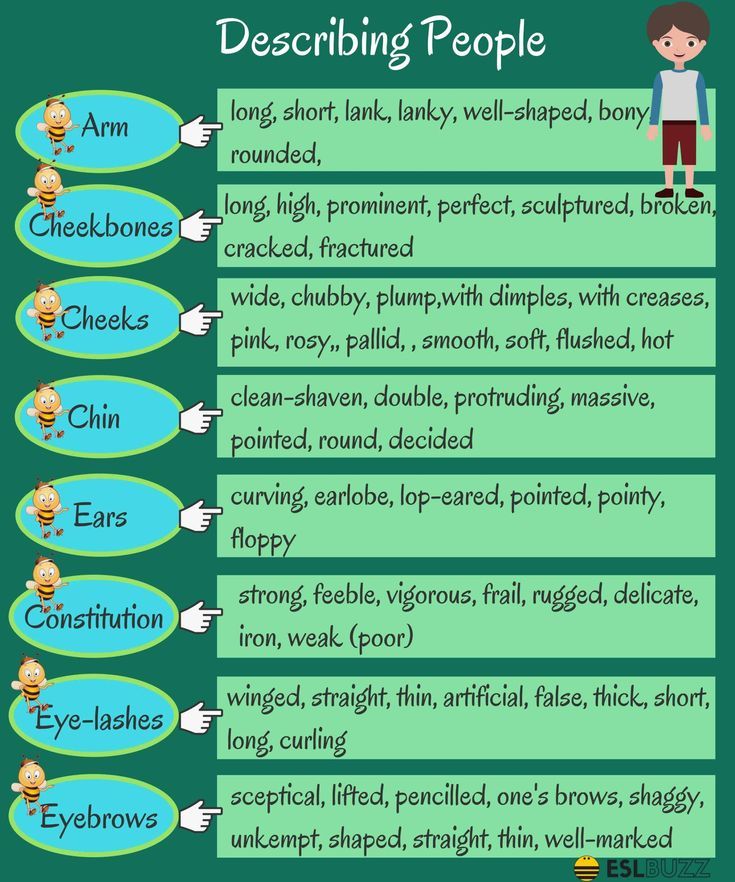 On average, 3,000 - 4,000 words will be enough to communicate on most topics.
On average, 3,000 - 4,000 words will be enough to communicate on most topics. However, we want to warn you: do not rely solely on the results of the test. It can only give a rough estimate of your vocabulary.
Our English Level Chart has a Vocabulary column that tells you how many words you need to know at each level.
And now let's find out what English words you need to learn:
- Basic vocabulary needed to understand foreign speech. There are eternal topics like "Greeting", "Family", "Food" - every person needs to know them.
- The words you need. If you need English for work, learn general business terminology or more specific industry terminology, such as for IT professionals. If you want to travel more, learn travel phrasebooks.
- Mastering all the lexical sets is impossible and pointless. Why do you need medical topics if you are not a practicing doctor? Except for watching "Doctor House" :-) Consult with an experienced English teacher, he will tell you exactly what to study.
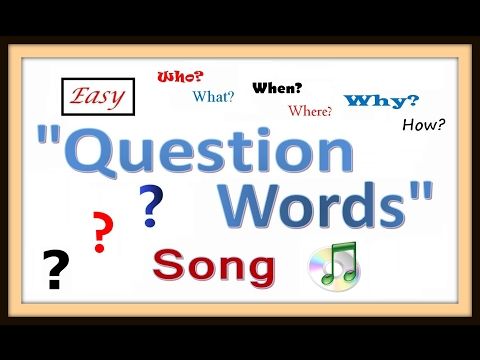
Where to get new English words
1. Favorite movies, series, songs, podcasts, books
This method is good because words are remembered in a context that is not boring for you. If you already watch films in English, you should take vocabulary from there. We advise you to use the resource ororo.tv. It is paid, but worth the money: you can watch new movies and TV shows in good quality with Russian and English subtitles. As soon as you come across an unfamiliar word, click on it and it will automatically go into your personal dictionary of new words.
The texts of most English-language songs can be found on the Amalgam resource. Or use the search bar in the browser: enter the name of the song and add the word lyrics. We also recommend a selection of podcasts, audio series and radio shows, as well as resources for downloading books online.
2. Special textbooks
Vocabulary books will help you learn new words and set expressions in which they are used.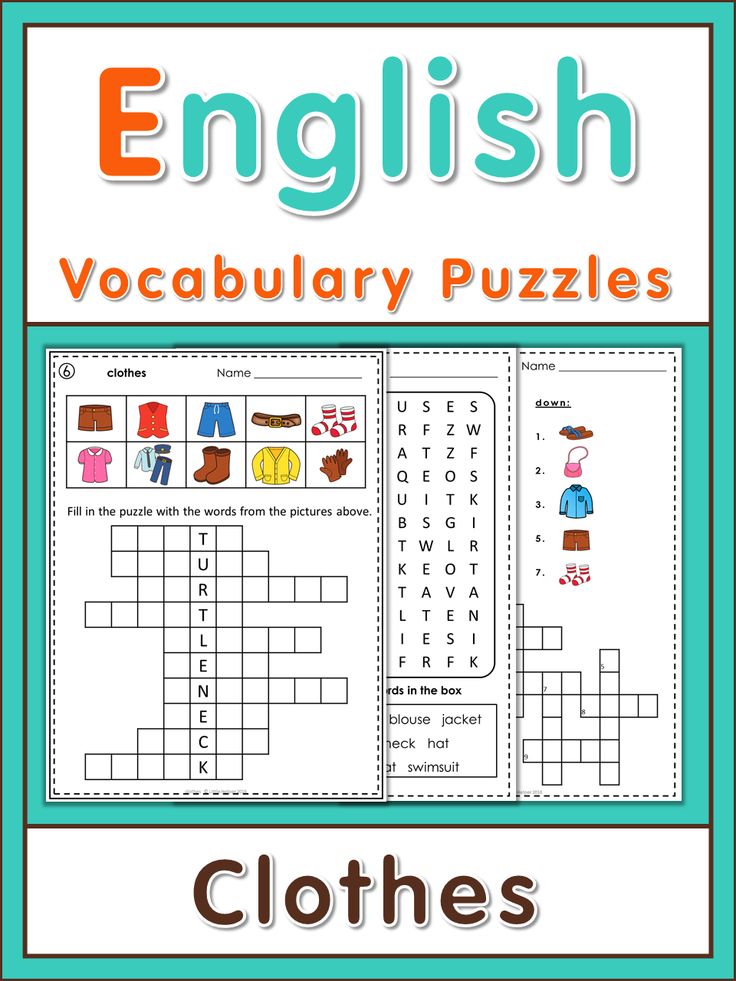 The benefits of manuals are that they provide lists of words along with examples of their use, so words are learned in context. We have presented a detailed review of textbooks for learning English vocabulary, be guided by it to choose the best manual.
The benefits of manuals are that they provide lists of words along with examples of their use, so words are learned in context. We have presented a detailed review of textbooks for learning English vocabulary, be guided by it to choose the best manual.
3. Lists or dictionaries of high-frequency words
How do you know if it is worth memorizing the next new English word that you meet? It may have fallen into disuse or is rarely used. You can refer to lists of words that are most commonly used by native speakers. We recommend you lists from the Oxford Dictionary - The Oxford 3000 British Dictionary and The Oxford 3000 American Dictionary. These are the 3,000 most important words any English learner should know. They have been carefully selected by linguists and experienced teachers. You can recognize these words in the Oxford dictionary itself by the key icon.
Tools for learning new words
1. Word cards
This technique may seem old-fashioned, but it is still effective.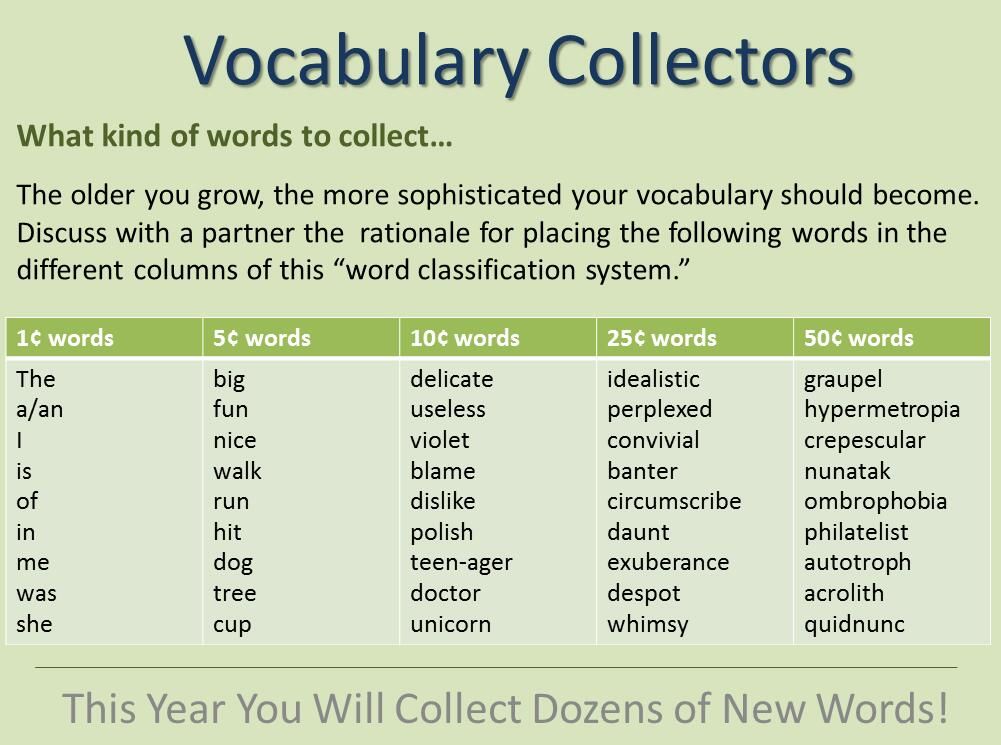 All students at least once in their lives started cards and tried to learn new vocabulary from them. It is convenient and affordable: no need to spend money, because you write them yourself, and you can take the cards with you anywhere.
All students at least once in their lives started cards and tried to learn new vocabulary from them. It is convenient and affordable: no need to spend money, because you write them yourself, and you can take the cards with you anywhere.
Before making cards, you need to choose a good dictionary that will help:
- pick up translation;
- get acquainted with typical phrases in which the word is used;
- study examples.
Then you should decide whether you will make paper or electronic vocabulary cards.
Paper cards
Color blocks are recommended (one color = one theme). Beginners can choose one of the following options:
- On one side of the piece of paper we write the word in English, on the other - in Russian. We test our knowledge: we translate a word from Russian into English and vice versa.
- On the one hand, we write the word in English and paste the picture, on the other hand, the translation into Russian.
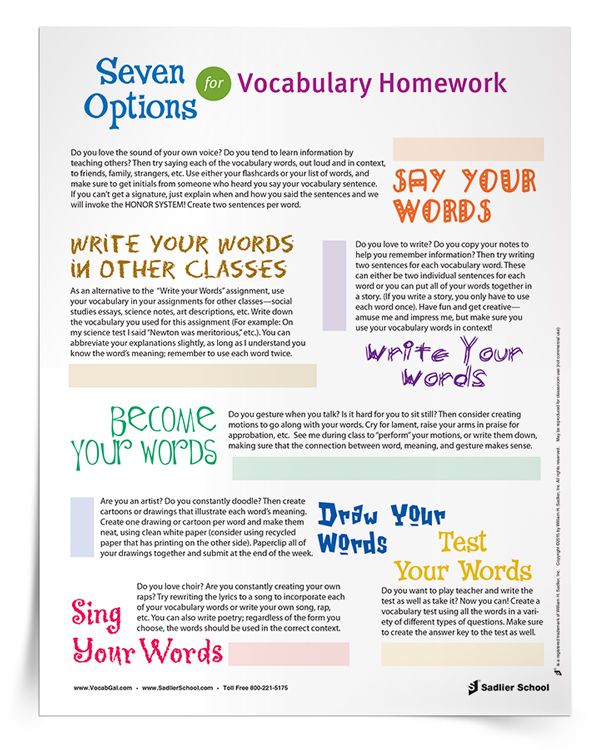 This method is well suited for people with associative thinking. In your mind, you associate a new English concept with the subject it denotes.
This method is well suited for people with associative thinking. In your mind, you associate a new English concept with the subject it denotes. - On the one hand, we write a word in English with a Russian context, on the other hand, a word in Russian without a context. When repeating vocabulary, try to translate the concept from Russian into English. And with the translation in the opposite direction, the second side of the card with the Russian context will help you.
- More experienced students are advised to use English-English dictionaries, such as the Macmillan Dictionary. On one side we write the word in English, on the other - its definition in English. You can also write synonyms and antonyms of the concept under study.
- And how to learn vocabulary? Remembering English words is best in context. Therefore, you can write on the card not just a word, but a sentence in which it is used. Examples of sentences can be found in electronic dictionaries, such as ABBYY Lingvo.
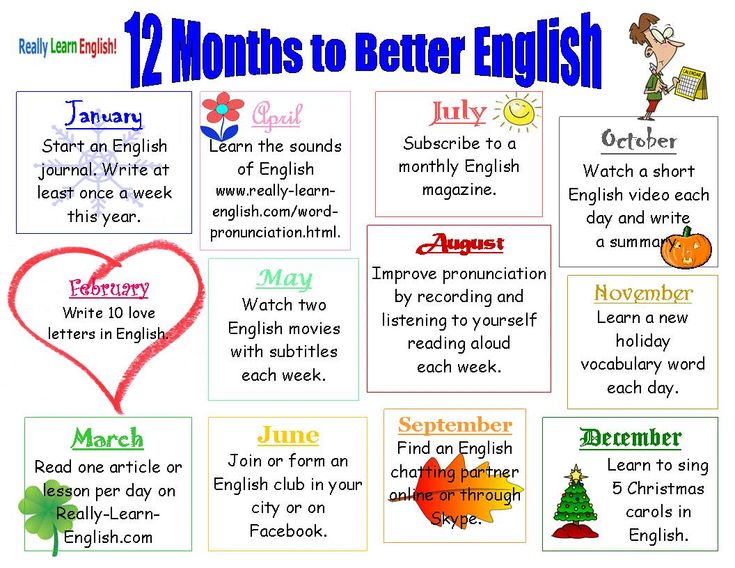
E-cards
If it's hard to get away from your computer, use your affection for good: create virtual stickers with words on your desktop and in a few days you will remember them well.
To create electronic vocabulary cards, we recommend the Quizlet service, which allows you to memorize words in different ways: choose the correct translation from four offered, fill in gaps in sentences and play games with words. Here you can also track your progress: which words are harder for you than others, how quickly you learn new vocabulary. There is an app for Android and iOS. An alternative resource is Memrise. Its free version has limited functionality, but it will be enough for compiling flashcards.
You need to constantly work with cards: review and repeat the learned vocabulary. Periodically change the cards to new ones, and after 1-2 weeks return the old ones again to repeat the words.
2. Vocabulary notebook
This method is good for those who constantly lose something: the cards are unlikely to last long :-)
You can structure the notebook in any way you like.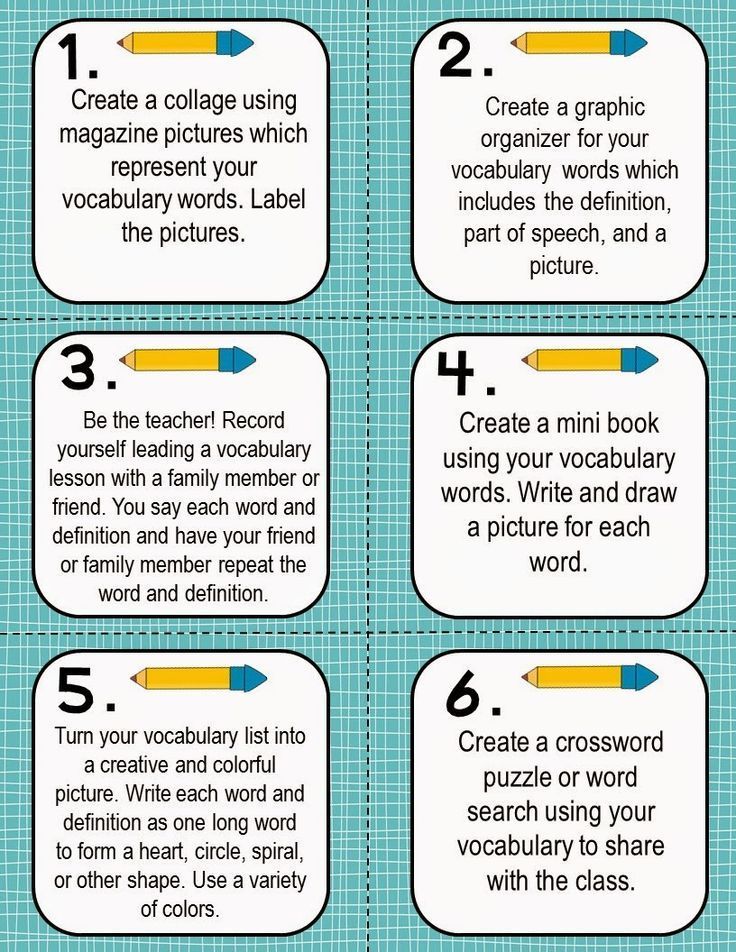 We present our version. Each page must correspond to a specific day. At the top, write the dates of the repetition of the words. In order for the studied vocabulary to be well fixed in memory, do not forget to train it. To do this, use the techniques described by us in the article "How to repeat so as not to forget anything."
We present our version. Each page must correspond to a specific day. At the top, write the dates of the repetition of the words. In order for the studied vocabulary to be well fixed in memory, do not forget to train it. To do this, use the techniques described by us in the article "How to repeat so as not to forget anything."
3. Mind map
You can easily learn English words of the same subject if you draw a mind map. Such a scheme clearly shows which topic the words belong to. In the meantime, you draw it, the vocabulary will be deposited in memory. A mind map might look like this:
We recommend using Coggle to create these mind maps. You can share the result with other people, as well as download mind maps in pdf or png.
4. Learning Websites and Apps
Study on learning resources, we recommend englishteststore.net, and in the article "5 websites to learn English words" you will find even more great learning resources.
On your way to work on the subway or in line at the clinic, use every free moment to learn new words. Useful programs for your gadget can be found in the article "28 best apps for learning English on Android and iPhone".
It is enough to practice 10-20 minutes daily to feel progress.
Useful tips on how to learn English words effectively
1. Combine words by topic
How easy is it to remember English words? Groups of words related to the same topic are usually well remembered. Therefore, try to break the words into groups of 5-10 pieces and learn them.
There is the so-called Restorff effect, according to which the human brain best remembers the most prominent from a group of objects. Use this effect to your advantage: in a group of words of one subject “introduce a stranger” - enter a word from a completely different subject. For example, when studying words on the topic “Fruits”, add one word from the topic “Transport” to them, in this way your studies will become even more effective.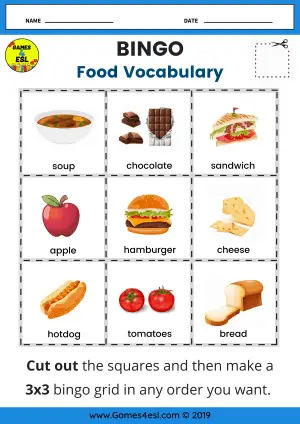
2. Use associations and personalization
Many students like this method: to learn a word, you need to come up with an association in Russian. For example, you need to remember the word obstinacy (stubbornness). Break it down into three syllables: ob-stin-acy, you get "stubborn as a donkey against a wall." The word shoot (to shoot) can be remembered as "the jester shoots." You can make convenient associations yourself, the main thing is that they are clear to you and easy to remember. This will make it easier for you to increase your English vocabulary.
Learning will be effective if you not only make a word association, but also visualize it: while saying the word shoot, imagine this shooting jester, let the image turn out to be as funny and memorable as possible. Even better, a dynamic picture with your personal presence: you imagine how the jester next to you shoots someone (with a water pistol to make the spectacle comedic, not tragic). The more alive the picture, the easier it will be to remember the word.
3. Use learned vocabulary in speech
How to learn English words correctly and not forget them? Are you familiar with the use it or lose it principle? In order for knowledge to remain in memory, you need to actively “use” it. It is good practice to make short stories using new words. The best remembered vocabulary is set out in a short funny text, which is written about oneself, beloved or dear to the heart of things.
If you take a course or have an English teacher, try to put new words into the conversation as often as possible: the more times you say a word, the better you will remember it. Do not forget about spelling: try to use new words in writing.
Tell me and I forget. Teach me and I remember. Involve me and I learn.
Tell me and I will forget. Teach me and I will remember. Make me do it and I'll learn.
Learn new words and apply them immediately with the Conversation Course.
4. Regularly test your knowledge
It is useful to take various tests to determine the level of vocabulary from time to time. For example, great picture quizzes (a joy for visuals and kids) are on the Vocabulary for learners of English page. After passing such a test, you will immediately see what is deposited in your memory, and which topics or words need to be repeated.
For example, great picture quizzes (a joy for visuals and kids) are on the Vocabulary for learners of English page. After passing such a test, you will immediately see what is deposited in your memory, and which topics or words need to be repeated.
5. Follow your daily plan
We have already told you how many words to learn per day. Recall that for the average person, it is best to learn 5-10 words a day. Be sure to follow your plan for learning new vocabulary to see progress.
6. Use entertaining learning methods
At engvid.com, native speakers explain complex information in a light, entertaining way, thanks to which new material is well remembered. On newsinlevels.com, every piece of news is adapted for different levels of English proficiency, and explanations are given for all difficult words.
You can expand your English vocabulary through fun activities such as crossword puzzles, gallows games, etc. A lot of fun is provided on the Have Fun Learning English and Vocabulary exercises pages.
7. Improve your memory
It is impossible to remember anything if you do not have a good memory. Learning a language in itself is a good exercise for our brain and improves memory. But to make it easier to remember, you can use the tips from our article “How to improve memory. Best Advice for English Learners.
8. Consider your type of perception of information
Not all methods are equally good for you. Don't try to apply everything at once. Try text, video, or audio formats and choose the ones that help you pick up new words faster. So you will come to your author's mix of techniques.
You can understand whether you are auditory, visual or kinesthetic by reading our article "Learn English according to the type of information perception."
The main thing - do not forget to move from theory to practice. Not only read useful tips on how to memorize English words quickly and easily, but also actively use them in everyday life, then you will not have to puzzle over how to improve your level of knowledge.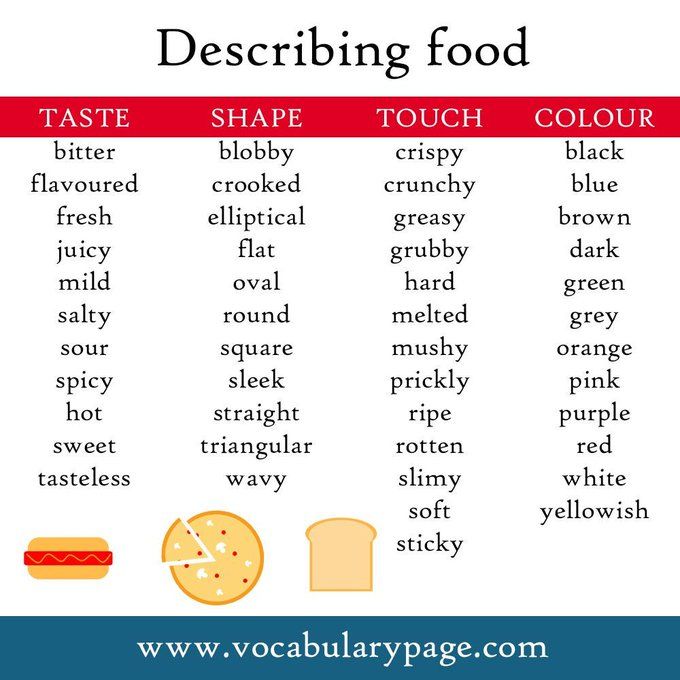
Do you count cards and notebooks with the words “yesterday”? Then try to learn words according to the current British textbooks in the online English courses at our school. Our students learn words and phrases in context, use them in a lively dialogue with the teacher, memorize new vocabulary easily and quickly. Try to learn English words in a new way!
© 2022 englex.ru, copying of materials is possible only with a direct active link to the source.
Table of English levels ‹ Inglex
According to the Common European Framework of Reference (CEFR), which was developed at the end of the 20th century, foreign language proficiency is usually divided into 6 levels. In 2001, the Council of Europe decided to use the CEFR to assess language proficiency in any language taught as a foreign language. According to the CEFR system, students' knowledge of a foreign language is divided into 3 groups, each of which, in turn, is divided into 2 groups. This is what CEFR English proficiency levels look like:
In this table you will be able to get acquainted with all aspects of the English language, which are studied at various levels of education. Vertically there are columns with types of speech activity (Listening, Speaking, Reading, Writing), two extreme columns display what grammatical material and vocabulary is studied at each stage. The levels of training are shown horizontally, from Beginner to Proficiency. At the intersection of the row and column, you can find a description of what skills and abilities are formed and developed at each stage.
Vertically there are columns with types of speech activity (Listening, Speaking, Reading, Writing), two extreme columns display what grammatical material and vocabulary is studied at each stage. The levels of training are shown horizontally, from Beginner to Proficiency. At the intersection of the row and column, you can find a description of what skills and abilities are formed and developed at each stage.
Vocabulary
Monologue
Dialog
Beginner
(initial)
To teach in English.
Talk about yourself in 2-3 sentences, answer questions within the framework of elementary vocabulary.
Greet the interlocutor, participate in a small dialogue, ask about the affairs, interests of the interlocutor, about his family and profession, say goodbye.
Learn how to read elementary sentences (no more than 7-9 words) using familiar vocabulary.
Learn to listen to short sentences with elementary vocabulary.
You can write your name, date of birth, brief information.
- To be
- Simple WH questions
- Present Simple
- Past Simple
- Future Simple
- Singular and plural nouns
Elementary vocabulary, mainly simple nouns, verbs, adjectives, pronouns
A1
ELEMENTARY
(above the initial)
LEARNING OF THE STRUCTION OF THE FRIENDS ON THE STRACTION OF THE FRISH family, about your preferences in food, music, etc.
You can exchange 2–3 phrases about yourself, your family, your city.
Express opinions about what you like.
Ask questions about the interests of the interlocutor.
Can recognize and understand familiar words and simple phrases (advertising, postcards).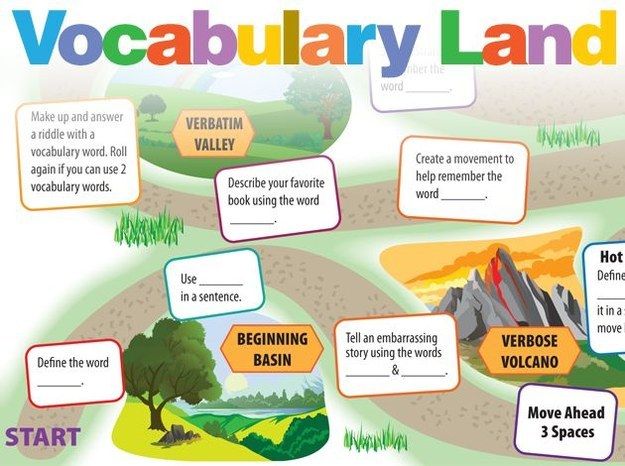
You will read short texts and dialogues with familiar vocabulary.
Learn to listen to the simplest and most frequently used words and phrases.
Understand teacher's words and short instructions.
You can write short greeting cards, letters.
Fill in a questionnaire about yourself (your name, nationality, address).
- Verb to be
- WH questions
- Present Simple
- Prepositions in, on, at
- Be going to
- Past Simple
- Irregular Verbs
- Countable & Uncountable Nouns
- ≈ 1000–1500 words
- About myself (about myself, my family, hobbies)
- About likes/dislikes, routines
A2
Pre-
Intermediate
(Intermediate Beginner)
Can you tell us about yourself, work and leisure in a few sentences.
Express an opinion based on the material studied.
Participate in a small, simple dialogue in a typical situation (meeting people, in a store, etc.).
Request information about direction, location, request a favor.
Learn to read short texts with a small amount of unfamiliar vocabulary that does not interfere with general understanding of the text (400–500 words).
You will recognize and understand by ear numbers and dialogues with familiar vocabulary.
Understand simple short texts with a minimum of new words.
Learn to write messages or short notes using familiar vocabulary and vocabulary (up to 10-15 sentences).
- Present Continuous
- Word Order
- Past Continuous
- Future Simple
- Present Perfect
- Verb + Ing or to-infinitive
- Modal Verbs (have to, must)
- Conditional Sentences (1, 2)
- ≈ 1500-2000 words
- Holiday
- Celebrities
- Clothes & Fashion
- Animals in our lives
- Sport & Activities
- People around the world
- Food & Festivities
- Health
B1
Intermediate
(Intermediate)
Be able to describe an event or experience, express your opinion with a total duration of about 2–3 minutes, supporting it with examples for about 2–3 minutes
You will be able to take part in spontaneous dialogue in all typical situations, including the exchange of short phrases expressing a personal attitude to a phenomenon or object.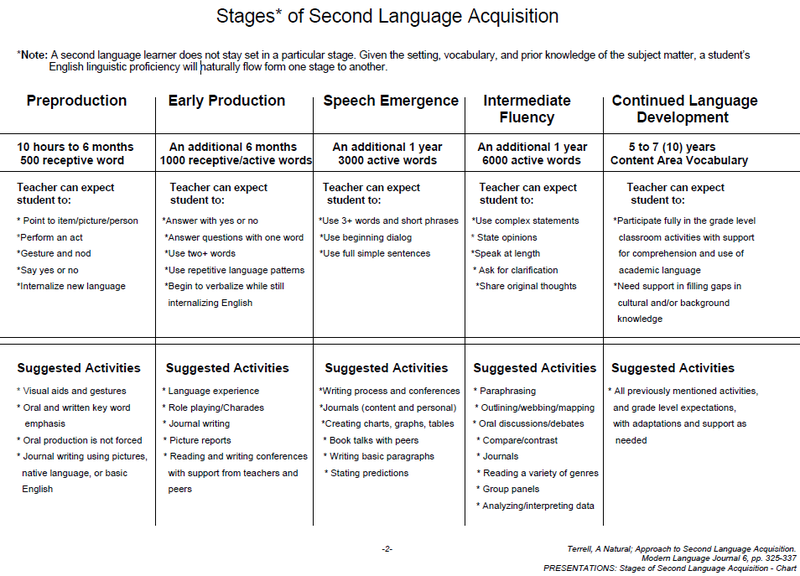
You will read texts of any type without special topics (letters, essays, articles), understand the main idea of the text, despite the presence of 10% unfamiliar vocabulary.
You will be able to understand the plot, the main characters, their actions in the stories.
In dialogues up to 2 minutes, understand the point of view of the speakers.
Understand specific vocabulary from context.
You can easily write a personal letter or a short coherent text with a plot (more than 20 sentences, without using a dictionary).
- Passive Voice
- Future Forms
- Present Perfect & Present Perfect Continuous
- Comparatives & Superlatives
- Modal Verbs (can, could)
- Gerund/Infinitive
- Conditional Clauses
- ≈ 2000–3000 words
- Food & Restaurants
- Sport
- Money
- Transport & Traveling
- Describing People
- Education
- Houses
- Friendship (people & emotions)
- Work
- Cinema
- Shopping
B2
Upper-Intermediate
(High Intermediate)
You will express your opinion clearly, describe your point of view in detail, develop and confirm with examples.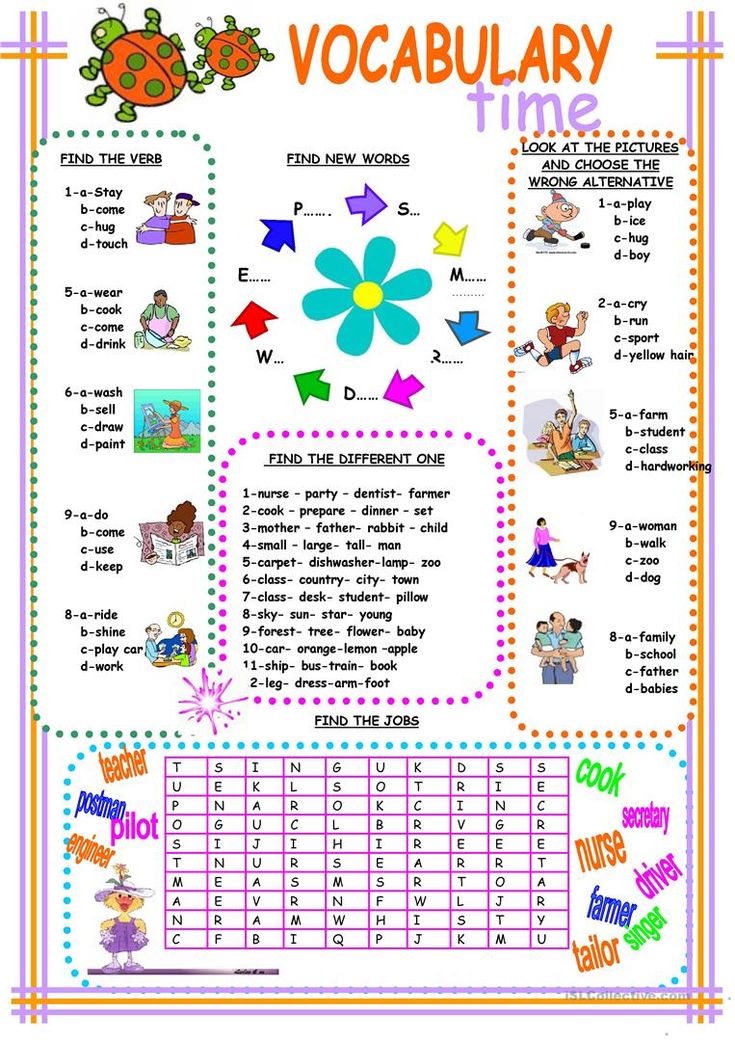
You will communicate with a fairly high level of spontaneity even with native speakers.
Understand fully the speech of native speakers and be able to respond in all typical situations.
You will be able to read with almost complete understanding thematic articles and reports, literary texts in non-adapted English.
Comprehend relatively fluently long texts in Standard English, eg radio broadcasts, interviews.
Write detailed and easy to understand texts on a wide range of topics.
Write essays and articles on various topics.
Introduction to writing styles (formal and informal).
- Repeat:
- Question Formation
- Present Tenses
- Past Tenses
- Future Tenses
- Phrasal Verbs
- ≈ 3000-4000 words
- Illness & Treatment
- Clothes & Fashion
- Air travel
- Crime & Punishment
- Feelings & Emotions
- The body
C1
Advanced
(Advanced)
Express your opinion on a free topic spontaneously, using complex grammatical structures, synonyms.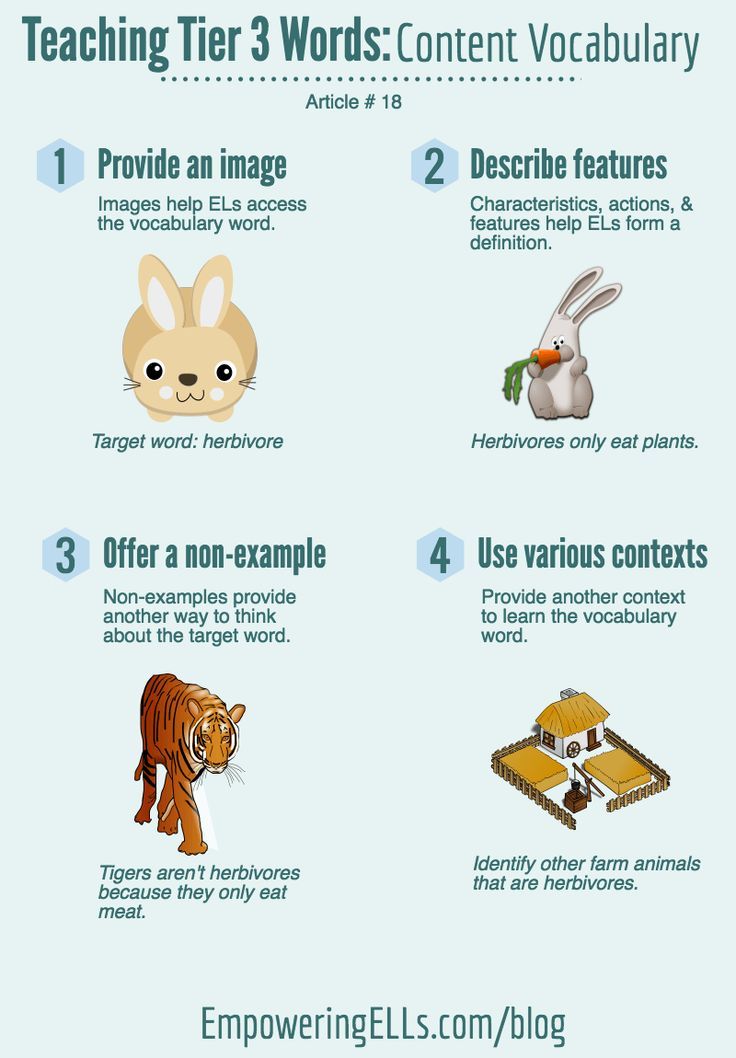
You will communicate in any situation with native speakers, using reasoned answers.
You will read unadapted articles and texts in English with a full understanding of the meaning.
Analyze the literature read.
Be able to comprehend long passages, including those in non-standard English (special accents, adverbs) with full understanding of what you heard.
You will be able to carry out business correspondence, write articles and essays on any given topic, using advanced grammar and stylistically colored vocabulary.
- The Past: narrative tenses, used to & would
- Stylistic Inversion
- Inversion in Conditionals
- Causative Form
- ≈ 4000-6000 words
- Work
- Emotions
- Environment
- Health & Sport
- Politics
- Traveling
- Education & ways of learning
- Technology & Progress
- Aspects of Culture
C2
Proficient
(Professional)
Express one's opinion freely, without training on any topic, even narrowly focused (medicine, law).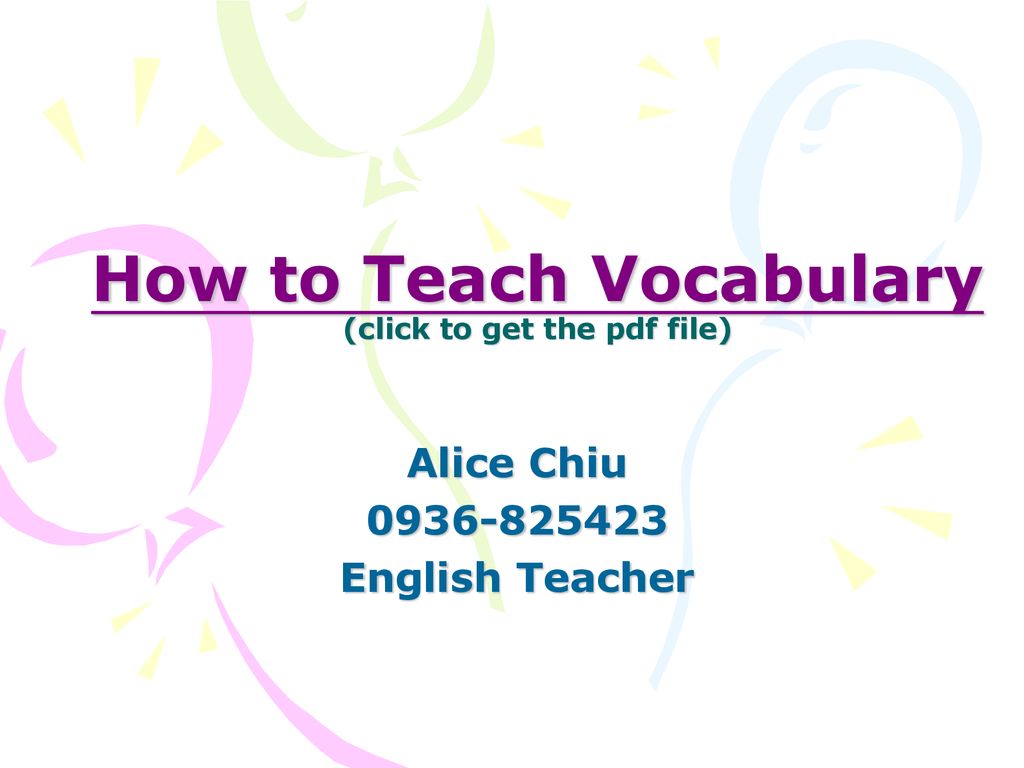
You will be able to participate in any dialogue or discussion without problems using idioms and stylistic figures of speech.
Effortlessly read any text, whether it's an excerpt from a work of art or a popular science article.
You will be able to understand spoken language without problems, even if you speak very quickly.
Be able to listen to any audio program in English.
Without preparation, freely express your thoughts in writing on a given topic, after analyzing the information in advance.
Write in any style (formal or informal).
Strengthening the development of complex grammatical structures.
Features of the use of phraseological units.
- People & Relations
- Cinema & Television
- Preventing & punishing crime
- City life
- Sport
- The mind & unconscious
- Work & future
If you want to learn more about each level of study, then we bring to your attention articles about the levels of English language training.

